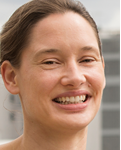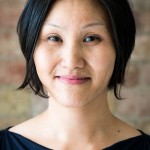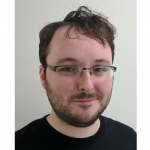This is the first of a three-part blog series to celebrate blogs to mark this milestone which will be published over three days. You can read more about Ada Lovelace’s legacy here.
 Juliane C Mossinger, Senior Editor, Nature
Juliane C Mossinger, Senior Editor, Nature
In the 1880s, when studying for a Ph.D. in geology, Florence Bascom had to take classes behind a screen so that she would not disturb her male colleagues. I wonder what she would have made of a news story in 2017 about a female Silicon Valley CEO, who dyed her blond hair brown and started wearing gender neutral clothing in order to be taken more seriously by investors?
Florence Bascom became a leading expert in the classification of rocks and the process of mountain formation. She was the first woman hired by the U.S. Geological Survey, and the first woman elected to the Council of the Geological Society of America. But it was not just all her ‘firsts’ that paved the way for future generations of female geologists. She didn’t pull up the drawbridge behind her. On the contrary, she founded the geology department at Bryn Mawr College and personally trained a generation of successful female geologist during the early 20th century.
 May Chiao, Chief Editor, Nature Astronomy
May Chiao, Chief Editor, Nature Astronomy
Dame Jocelyn Bell Burnell is very much in my thoughts. You see, next month is the 50th anniversary of the discovery of pulsars — rapidly spinning neutron stars that emit radio waves in the way that lighthouses sweep a light beam around.
As a PhD student, she first noticed a ‘smudge’ in the data printouts from a radio telescope that she helped build, and then she found several such smudges in the miles of printouts. Through her meticulous efforts, she convinced her supervisor, Antony Hewish, that the signals were real. In fact, they came from a new type of compact object. They published their work in Nature, and Hewish was awarded the Nobel prize in 1974.
She could have stopped there. But throughout her research career, Dame Jocelyn has held prominent posts that helped her to redress the gender imbalance, and inspire women and minorities to be successful in physics.
 Andrew Bissette, Communications Chemistry
Andrew Bissette, Communications Chemistry
When asked to think of a female chemist who has made major contributions to chemistry, Donna Blackmond immediately comes to mind.
Blackmond has made multiple major contributions to our understanding of catalysis, stereochemistry, and prebiotic chemistry. Her work demonstrates uncommon rigor and insight into the fundamental principles of physical organic chemistry, and reading her papers is reliably an educational experience.
Unlike many, Blackmond is not afraid to directly and openly address published errors. By challenging and correcting errors through essay and experiment, she has tangibly improved the quality of the literature.
I’m particularly enthusiastic about her work revealing the role of phase behaviour in non-linear effects. As well as clarifying some apparent inconsistent results concerning non-linear effects in asymmetric organocatalysis, this led directly to a thermodynamic model for the origin of biological homochirality. I believe this model will only grow in influence as the current generation of young researchers come of age.
 Luíseach Nic Eoin, Associate Editor, Nature Ecology and Evolution
Luíseach Nic Eoin, Associate Editor, Nature Ecology and Evolution
The archaeologist Dorothy Garrod was shy, retiring, and wasn’t a vocal advocate for women in science. That makes her sounds like a strange choice for Ada Lovelace Day, but she inspires me because she simply got things done, without concern for the glass ceilings she smashed.
She excavated with all-female teams across Europe and the Levant, finding sites, fossils and artefacts key to human evolution. This led to her election as the first female Oxbridge professor, before women could even graduate from Cambridge.
Despite her lofty position, she would set it aside to focus on what she thought was most important: first, when she put her unparalleled knowledge of European and Levantine topography to use in interpreting aerial photographs during WWII, and then ultimately in resigning her professorship to concentrate full time on her research.
Garrod’s concern was for the work at hand, rather than her legacy, but by breaking new ground in all senses of the term, she inspired and fostered generations of researchers.
 Alexa McKay, Associate Editor, Nature Communications
Alexa McKay, Associate Editor, Nature Communications
Jane Lubchenco’s advice to women scientists is “If an opportunity doesn’t exist, create one.”#
To balance the demands of academia with the needs of her family, she and her husband split a tenured professorship for over a decade while raising their children. During this innovative negotiated arrangement, Lubchenco produced extremely influential papers in both fundamental ecology and applied marine conservation, and also garnered numerous awards and honours.
These accomplishments propelled Lubchenco to further success in becoming the head of the National Oceanic and Atmospheric Administration; notably, she was the first woman to serve in this role. In that agency, and as a science advisor to President Obama, Lubchenco shaped key US environmental policies for oil spill responses, fisheries sustainability, and marine resilience to climate change. Lubchenco inspires scientists to take up the mantle of policy engagement, and she advocates for the critical importance of diversity and inclusion in conservation biology.
Comments